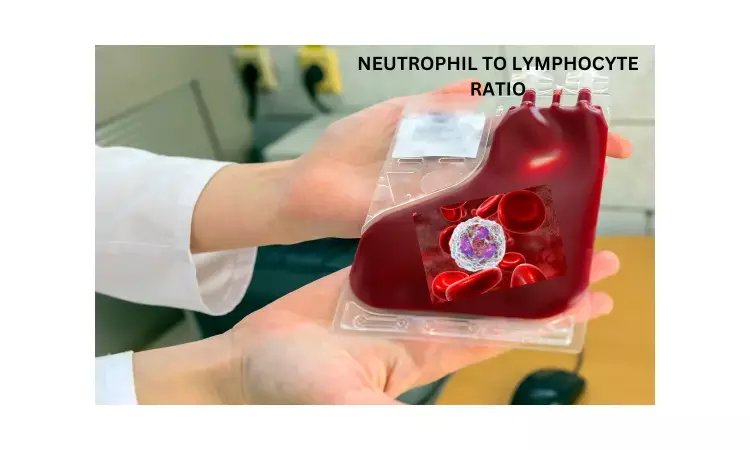- Home
- Medical news & Guidelines
- Anesthesiology
- Cardiology and CTVS
- Critical Care
- Dentistry
- Dermatology
- Diabetes and Endocrinology
- ENT
- Gastroenterology
- Medicine
- Nephrology
- Neurology
- Obstretics-Gynaecology
- Oncology
- Ophthalmology
- Orthopaedics
- Pediatrics-Neonatology
- Psychiatry
- Pulmonology
- Radiology
- Surgery
- Urology
- Laboratory Medicine
- Diet
- Nursing
- Paramedical
- Physiotherapy
- Health news
- Fact Check
- Bone Health Fact Check
- Brain Health Fact Check
- Cancer Related Fact Check
- Child Care Fact Check
- Dental and oral health fact check
- Diabetes and metabolic health fact check
- Diet and Nutrition Fact Check
- Eye and ENT Care Fact Check
- Fitness fact check
- Gut health fact check
- Heart health fact check
- Kidney health fact check
- Medical education fact check
- Men's health fact check
- Respiratory fact check
- Skin and hair care fact check
- Vaccine and Immunization fact check
- Women's health fact check
- AYUSH
- State News
- Andaman and Nicobar Islands
- Andhra Pradesh
- Arunachal Pradesh
- Assam
- Bihar
- Chandigarh
- Chattisgarh
- Dadra and Nagar Haveli
- Daman and Diu
- Delhi
- Goa
- Gujarat
- Haryana
- Himachal Pradesh
- Jammu & Kashmir
- Jharkhand
- Karnataka
- Kerala
- Ladakh
- Lakshadweep
- Madhya Pradesh
- Maharashtra
- Manipur
- Meghalaya
- Mizoram
- Nagaland
- Odisha
- Puducherry
- Punjab
- Rajasthan
- Sikkim
- Tamil Nadu
- Telangana
- Tripura
- Uttar Pradesh
- Uttrakhand
- West Bengal
- Medical Education
- Industry
NLR predictive index for liver and coagulation dysfunction in preeclampsia patients

A new study in BMC Pregnancy and Childbirth, reveals that neutrophil to lymphocyte ratios (NLR) could be used as an independent predictor of liver and coagulation dysfunction in Pre-eclampsia (PE) patients. PE is related to an enhanced immune response hence immune cell characteristics such as neutrophil or monocyte to lymphocyte ratios (NLR, MLR) are known to be related to kidney and liver dysfunction in hypertensive patients hence can be evaluated for the same.
PE is a serious complications of pregnancy with growing rate of 3–3.5% from 20 weeks into pregnancy. The clinical manifestations of PE are hypertension, proteinuria, HELLP syndrome (hemolysis, elevated liver enzymes, and thrombocytopenia), maternal pulmonary edema, cerebral palsy, and cerebrovascular accidents in severe cases.
Hui Xing Cui and team aimed to analyze the correlations between NLR, MLR and platelet to lymphocyte ratio (PLR) and liver, renal and coagulation functional parameters and the impacts of these immune cell profiles to the prognostic significance in PE patients.
A total of 320 first-time pregnant women with pre-delivery hematological and biochemical parameters analyzed retrospectively. Patients were divided into normal pregnancy (normal, n = 161), mild PE (mPE, n = 28) and severe PE (sPE, n = 131) groups according to diagnostic criteria. Pearson correlation analysis were performed and area under the curve (AUC) were conducted for the diagnostic values of NLR, MLR and PLR. Results were validated with data from the Department of Obstetrics and Gynecology of Seoul National University Hospital (SNUH).
The key findings of the study are:
• Kidney functional indexes were adversative in mPE and sPE and liver and coagulation indexes were worse in sPE compared to normal groups.
• Among immune cells, lymphocytes were increased in mPE and sPE patients, resulted in reduced NLR, MLR and PLR in PE groups, more significant difference were shown in sPE.
• NLR and PLR were associated with CREA and/or BUN negatively and positive associations were observed with total protein (TP) and albumin (ALB) in sPE.
• Only NLR showed positive associations with coagulation indexes (PT and APTT) in sPE. AUC analysis for NLR, MLR and PLR were 0.700, 0.656, 0.643, respectively, and NLR < 3.7 predicted hypertension (95% CI in all participants: 0.647–0.749, p < 0.001).
• Blood pressure, liver, kidney and coagulation indexes were worse at cut off value (NLR < 3.7), and this was validated with the data from SNUH.
Hui Xing Cui and team concluded that NLR could be used as an independent predictor of liver and coagulation dysfunction in PE patients. Their results may provide non-invasive and efficient way of the risk assessment among PE patients.
Reference: Cui, H.X., Chen, C., Jung, Y.M. et al. Neutrophil-to-lymphocyte ratio (NLR) as a predictive index for liver and coagulation dysfunction in preeclampsia patients. BMC Pregnancy Childbirth 23, 4 (2023). https://doi.org/10.1186/s12884-022-05335-1.
MSc. Neuroscience
Niveditha Subramani a MSc. Neuroscience (Faculty of Medicine) graduate from University of Madras, Chennai. Ambitious in Neuro research having worked in motor diseases and neuron apoptosis is interested in more of new upcoming research and their advancement in field of medicine. She has an engrossed skill towards writing and her roles at Medical dialogue include Sr. Content writer. Her news covers new discoveries and updates in field of medicine. She can be reached at editorial@medicaldialogues.in
Dr Kamal Kant Kohli-MBBS, DTCD- a chest specialist with more than 30 years of practice and a flair for writing clinical articles, Dr Kamal Kant Kohli joined Medical Dialogues as a Chief Editor of Medical News. Besides writing articles, as an editor, he proofreads and verifies all the medical content published on Medical Dialogues including those coming from journals, studies,medical conferences,guidelines etc. Email: drkohli@medicaldialogues.in. Contact no. 011-43720751


